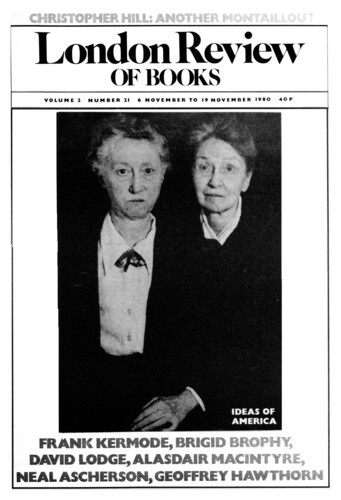End of Story
Robert Taubman, 20 November 1980
‘In this unique fiction,’ say the publishers, ‘word and image meet with a richness scarcely seen since Blake.’ Certainly A Humument is no ordinary novel: but nor is it much like Blake’s engravings, ‘Word and image’ meet in these pages more as they do in a comic strip – in particular, the comic strip as it has entered Pop Art – or as in the single words of type in a Cubist painting. Tom Phillips is a painter who has exhibited earlier versions of these pages as a form of Gesamtkunstwerk, with the Coleridgean aim of ‘keeping the greatest number of things suspended in a unity’. In the past, he has also used other material such as picture-postcards, with the axiom ‘Everything in the world exists to end up as a postcard.’ But everything ends up as a book, in Mallarmé’s original words, and a book comes appropriately from a painter who first found his own voice, in 1965, through ‘chance procedures and the extensive use of texts’. This is what Burroughs and other novelists have been up to. And the sub-text of A Humument’s 367 pages is itself a novel: W.H. Mallock’s A Human Document, in an edition of 1892. Most of this sub-text has disappeared under acrylic gouache, collage or pen and ink, leaving a few islands or isthmuses that stand out to be read as words. If there’s a connection with games played by Max Beerbohm and Joe Orton in ‘treating’ a printed text, A Humument is never merely subversive or facetious, and pictorially is highly effective. There are pages that suggest soil profiles as used by ecologists, or Matisse cut-outs or Pop Art fashions: but brought together in a pocket book they reveal that Mr Phillips has a distinct and pleasant voice of his own.





